Growing vegetables in one’s backyard have become a popular activity. For some of us, gardening is a way to unwind and get physical. Many people desire to grow their food. They want to save money because they appreciate the superior taste of home-grown fruit or because they want to plant rare cultivars that cannot be found in supermarkets. This guide will help you create a vegetable garden for whatever purpose. Growing a fruitful garden often requires an early start in Idaho.
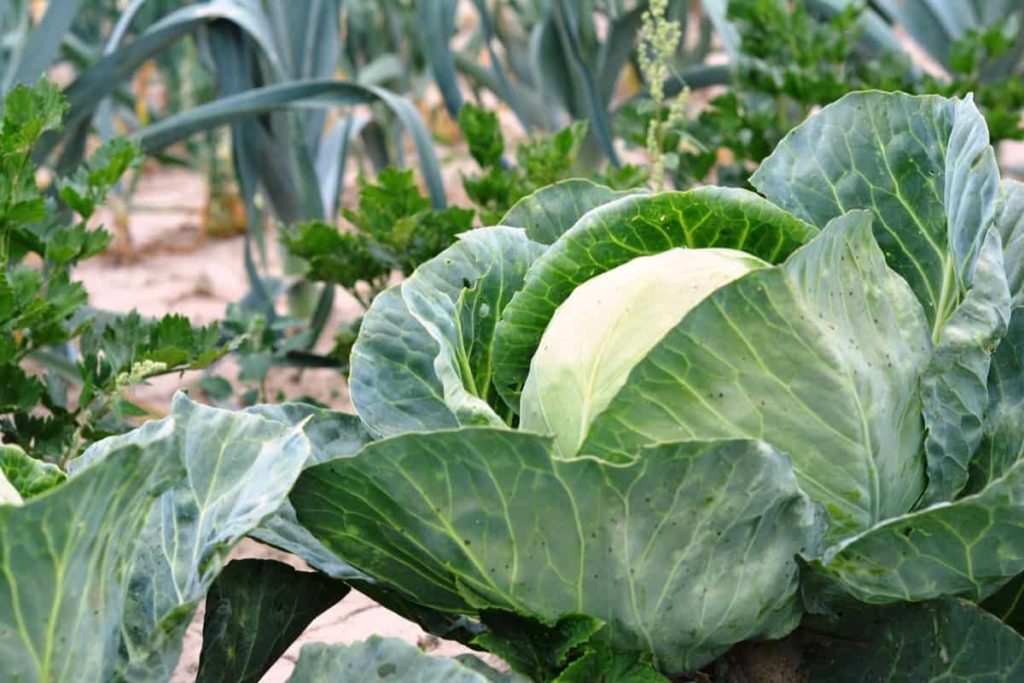
Below we learn about home gardening in Idaho, different types of home gardens, how to set up a backyard home garden in Idaho, how to set up an indoor home garden in Idaho, how to set up a container garden in Idaho, and different fruits and vegetables that can be grown in Idaho home gardens.
How to start a home garden in Idaho (ID) from scratch
Is Idaho good for gardening?
Gardeners in Idaho have to deal with short growing seasons, fluctuating temperatures, strong winds, and low humidity. Zone 4 of the USDA Plant Hardiness Map covers most of Idaho. However, zone 3 is present in the southern part of the state. The average growing season in these regions is about 21 days.
The high altitude of Northern Idaho presents unique obstacles for gardeners. Despite the region’s short growing season and strong winds, gardeners in southern Idaho enjoy abundant rainfall and a mild climate. In addition, the agriculture in southern Idaho is easy to rinse because of the canal networks that run across the region.
When should I start a garden in Idaho?
Everything is timed around the first and final frost dates. The latest date of average annual frost for a location in hardiness zone 5 is around April 15th, while the earliest date of average annual frost is October 16th. To some extent, the optimal planting window will depend on these dates. The optimal time to start seeds indoors for most crops is from six to eight weeks before the average last spring frost date. Midwestern states should start their seedlings inside during the latter week of April. The final frost in the South might occur as early as February, so sow indoor seeds then.
What kind of vegetables can you grow in Idaho?
Plants that flourish in an early garden in Idaho include those belonging to the cabbage family, beets, onions, carrots, lettuce, chard, spinach, radishes, peas, turnips, and chard. Before planting seedlings or transplanting, warm-season crops like maize, tomatoes, peppers, beans, melons, eggplant, and squash must wait until all risk of frost has gone. This is because warm-weather crops are more susceptible to damage from frost.
What fruits and vegetables grow well in Idaho?
Lettuce, kale, peas, tomatoes, cherries, beets, onions, chard, the cabbage family, carrots, spinach, radishes, turnips, eggplant, beans, corn, peppers, melons, and squash, apples, peaches, apricots, plums, pluots, and table grapes are some of the many vegetables and fruits that are grown well in Idaho.
What is Idaho’s number one crop?
Potatoes are grown in large quantities in Idaho, and the state is the undisputed leader in the nation’s potato output. Our farmers harvest about 100 million or more than 300,000 acres of potatoes yearly. Warm days, chilly nights, and rich volcanic soils are perfect for tuber sets, yielding potatoes with a high solid count. Famous Idaho Potatoes include the Russet, Yukon Golds, Reds, and Fingerlings.
What kind of soil does Idaho have?
Soils of Idaho’s varied topography are just as varied. Many variables influence soil composition. Soil can be made in Idaho from a wide range of resources, including rock and volcanic ash. Soil development is also influenced by temperature and precipitation. The annual precipitation in Idaho may vary from 8 to 60 inches, depending on where you are. Consequently, the soil’s pH, mineral composition, flora, and fauna are unique. The soil in grasslands is often Mollisol, a kind of soil found across Idaho.
Organic materials, primarily from plant roots, make this soil ideal for farming and plant growth. The state of Idaho has a high concentration of inceptisols. Soil like this can be found mostly in the mountains of Idaho and other very damp regions. Agricultural uses are possible. Soils with entisol are prevalent in Idaho’s rocky mountain regions and along the state’s rivers. The entisol soil type is variable and cannot be classified. Both agricultural purposes and the cultivation of wild vegetation benefit from its usage.
What zone is Idaho for planting?
The easternmost part of Idaho is in planting zone 3b, while parts of the state’s central and western portions are in zone 7b. The first step toward a successful garden in Idaho is learning about the different growing zones. An interactive planting zone map makes it simple to find out which zone you are in for gardening in Idaho. Only plant kinds are classed as hardy in that zone or below since those not adapted to colder climates would struggle during the winter months or in freezing temperatures typical of lower-zone locales.
In case you missed it: How to Start a Home Garden in Connecticut (CT) from Scratch: For Indoors, Outdoors, Backyards, and Containers
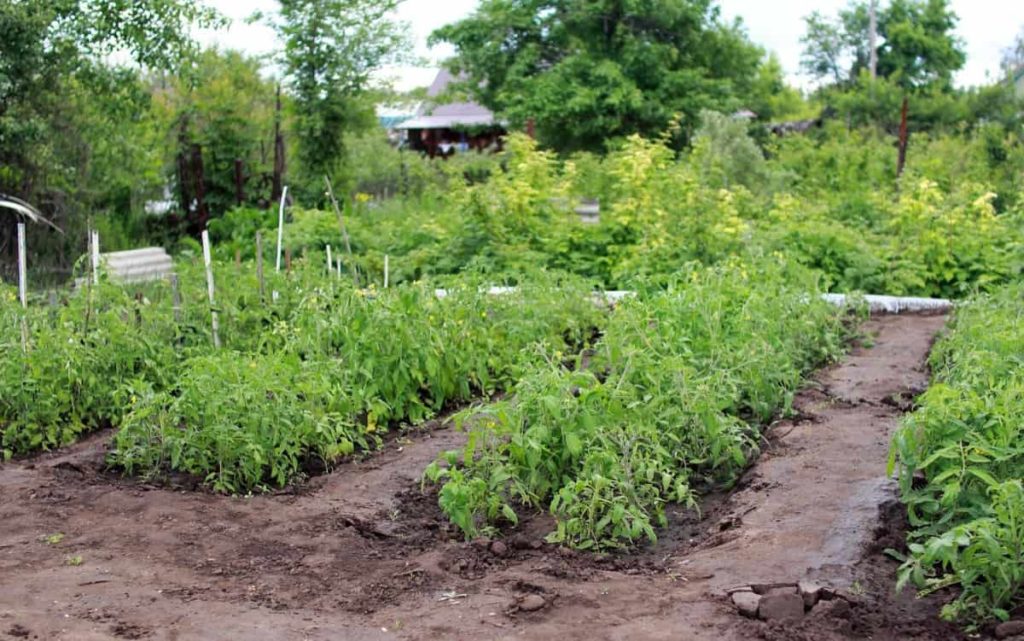
Picking hardy plants in your area’s climate zone is the best way to ensure your garden’s continued success year after year. Planting zones in Idaho vary as much as the state’s climate. While most of the state has a standard four seasons, its higher mountain areas, especially in the spring and summer, are recognized for their extreme weather variability. Despite being almost 350 miles from the Pacific Ocean, the state’s varied climate shows marine influence, particularly in the western portion.
The state’s eastern regions have a more typical semiarid continental climate. On average, the state’s northern half receives more rain than the southern half, although the southern section has milder summers. Seasonal extremes are possible across the state, with scorching summers and chilly winters. However, sustained subzero temperatures are not frequent.
Does Idaho have acidic soil?
The acidity or alkalinity of soil is quantified by its pH value. The neutral pH level is 7, and the range goes from 0 to 14—the greater the number, the more excellent alkaline the liquid. Readings below 4.5 or over 9.5 are quite unusual in soils. Eastern Idaho’s soils are uniformly alkaline, with pH levels between 7.5 and 8.5; however, the ideal range for plant growth is a more acidic pH of 6.5. The availability of nutrients is inversely proportional to the soil’s pH. There are a wide variety of ideal soil pH levels for growing plants.
Plants like azaleas, rhododendrons, blueberries, and conifers need acidic soil to grow (pH 5.0 to 5.5). Soils with a mild acidity are ideal for growing vegetables, grasses, and most decorative plants (pH 5.8 to 6.5). Lower or higher than optimal soil pH can reduce plant vitality and cause nutritional shortages. Phosphorus and most of the micronutrients such as zinc and iron become less accessible at pH levels of 6.5 and higher. The optimal pH value of the soil is more effective at correcting most secondary and micronutrient shortages than adding more of the nutrient itself.
When should I plant seeds indoors in Idaho?
Seeds for most vegetables should be planted indoors between 3 and 8 weeks before the average date of the last frost. Tomatoes, peppers, eggplant, and other warm-season vegetables are often seeded between six and eight weeks before this day. Vegetables that grow on vines, like cucumbers, pumpkins, and squash, can be started in late April and transplanted in late May when the soil and air are warm enough for the plants to thrive.
Plants of the cool season, such as cabbage, broccoli, cauliflower, lettuce, and peas, can be started four to six weeks before the final frost. Because of their resistance to cold, these vegetables can be planted in the garden far before the typical end of the frost season.
When should you plant flowers in Idaho?
You need to pay great attention to the weather in your area. In general, the timing of when you put your flowers outdoors will depend on whether or not the first or final frost has occurred.
How do I start a backyard garden in Idaho?
Choosing an ideal location in the backyard
Plants grown at home, whether in a pot on a patio or in a large garden, can help decrease your environmental impact and improve your health. Place your garden as close to your home as you can. Consider the needs of your family and neighbors while deciding what to grow in your garden this year. Making a printing is as simple as sketching the region of interest to scale on a piece of grid paper. All plants thrive best in full sunlight.
Shaded areas are ideal for growing root and leaf crops. Lack of sunlight exacerbates proliferation problems for many plants. Position trellises and other similar objects on the northern side of the garden to prevent little plants from being buried by taller ones. Water your garden carefully and often. Ideal soil conditions include a level, well-drained surface. Composting and other organic resource additions improve soil quality and crop production.
Generally speaking, the distance between plants should equal the size of the largest leaf on the largest plant. A broad range of conditions is suitable for growing most plants. After harvesting the first crop, it is time to start planting again.
Soil preparation in your backyard
Get rid of the grass or sod before you loosen the soil. If you need the soil gone quickly, try using a motorized tiller or cultivator. Several of the area hardware and garden supply companies provide daily equipment rentals. You should use gloves to keep your hands clean and safe when gardening. Try squeezing a handful of soil in your hands. If you press the soil very firmly, it should form a ball.
You’re probably dealing with clay if the soil rolls into a ball. It’s hard to roll a ball on very sandy soil. Since soil composition may vary, gardeners should take samples from several areas throughout their plots. The soil should be worked up and prepared for planting three weeks beforehand. The plants begin to flourish after the soil has taken up nutrients. The soil should be turned over so the topsoil is on the bottom before planting.
Plants can have an excellent rooting start if you make consistent soil clods and plant them. Try to improve the soil if you can wait until fall or winter to grow in Idaho. To make gypsum powder, get out the shovel and spade. Gypsum can be found at most hardware and garden supply shops. Only gypsum should be used to aerate sandy soils. By covering sandy soil with 10 cm of compost, the pH is significantly increased.
To restore the soil’s nutrient levels, you can apply manure or compost, both of which have a buffering impact on the soil’s pH. With consistent usage, compost can enhance soil drainage and prolong plant vitality. The soil can be improved by mixing in compacted compost with a shovel. You’ll advance two inches if you add two inches. Compost can be purchased from nurseries or hardware stores, or it can be created at home.
Composting animal waste or corpses might be bad for your vegetable crop. Fertilize soil to grow plants. To ensure that your plants get all three of these nutrients, NPK fertilizer is an excellent choice. One pound of 10-10-10 fertilizer covers 100 square feet. Amend the soil with fertilizer before planting seeds. Some plants may die if you use too much fertilizer in the soil.
In case you missed it: How to Start Backyard Gardening in Sydney: A Guide for Growing Vegetables, Flowers, Fruits, and Herbs at Home in Australia
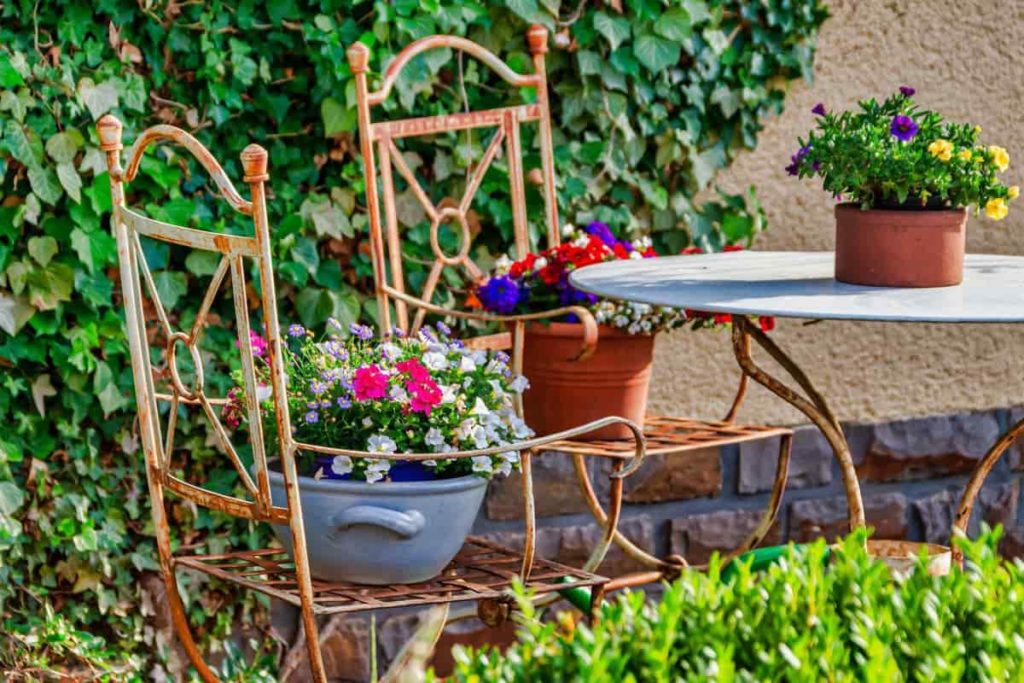
Start planting a backyard garden.
Soil mixes and flats/pots made especially for seedlings may be found at garden centers. Without enough water, seeds and young plants will rot. Buying seedlings or young plants might simplify the gardening process.
Preparing the bed involves following the instructions on the tag and drilling the holes to the given specifications. Start from the bottom to prevent injuring plant roots. Soil that needs to be amended can get composted as animal dung. Being root-bound is a term for this issue. First, wet the area well and loosen the soil surrounding the roots.
Water your backyard garden
Morning watering is essential. This helps avoid diseases by preventing leaves from drying down after sundown. The optimal temperature for fungal growth is approximately 80 degrees Fahrenheit, and in warm, humid conditions, the growth cycle can be as short as two to four hours. Plants are susceptible to death if overwatered. Soak the ground till you can easily dig with a shovel. Leaks that wastewater cost money that might be put to better use.
It’s best to water plants in deep bowls so the water may seep down to the roots. To lessen the amount of water that washes away, it’s important to wet the ground thoroughly. Spraying using sprinklers should be avoided to save water waste and runoff. Using a drip watering system, water can be given to a plant’s root zone slowly and consistently, maximizing the likelihood that the plant will absorb and utilize the irrigated water.
Low-cost cartridge-type filters should be used in drip water systems to clean the water supply and remove trace particles or salts. A drip watering system can range from simple tubing to sophisticated self-purifying emitters. Soil can be sandy, loamy, or clay, but these are the most common forms. The density of the liquid is directly related to the pace at which the clay absorbs it.
Therefore, a wide variety of volumes can be contained in only one inch of water. From sand to loam to clay, soil comes in a wide variety of textures. Rather large tobacco plants have roots that can grow as deep as three feet. Compact clay soil can survive three days of constant soaking. When watering your garden, wait before walking on the soil to avoid compacting it and smothering the roots.
Weekly overhead watering keeps plant leaves clean, but the water never touches the soil. Recycled plastic bottle drip watering cans are an excellent tool. It is advised to halve the plant lengthwise before planting it, to give it water and fertilizer, and trim the top before finally burying it.
Control pests and diseases in your backyard
Instead of using poisonous pesticides, consider employing a high-pressure water pipe to eliminate insects. If the current approach is unsuccessful, a switch to insecticides with a more specific mode of action can be made. The “one spray kills all” strategy will not work since it does not differentiate between helpful and dangerous insects.
Insecticides with a lower toxicity level should be used first, wherever possible. Little evidence suggests that these pesticides pose a threat to non-target species. Whether attempting to get rid of insects or plants, you should always check the label to see if the product is approved for that purpose.
Aphids, whiteflies, mites, and aphid eggs can all be eliminated with insecticidal soaps available in handy spray bottles and may need repeated treatments. Insecticidal oils kill various pests, including whiteflies, spider mites, scale insects, mealybugs, psyllids, lace bugs, spider mites, aphids, and thrips. We need a lot of plants. You shouldn’t use this treatment if your crops are already water-stressed.
How do I start a container garden in Idaho?
Choosing ideal containers
If you have a larger container, you can water it less often. Large plants in tiny pots need more regular watering and feeding during the warmer months. Choose a pot with enough drainage holes for your planting method and environment. Regardless of how much water you provide your plants, Mother Nature has the last say in how much they will need. Photosensitive plants can suffer root damage if their containers are black or metal and are left in direct sunlight for an extended period.
Terra cotta pots have been popular for a long time. This material is faster to dry than many others, lighter in weight, and more aesthetically pleasing. Glazed vessels can be stunning to the eye, but they are also both costly and cumbersome to transport. Plastic planters come in a wider range of shapes and prices than clay ones. The strong half-whiskey barrel is another option. Drill holes in the planter’s bottom if there aren’t any already.
Soil preparation for your containers
Sand, vermiculite, or perlite can be mixed into the soil to keep it light and well-drained—a soil’s ability to retain water increases when peat is added. The soil must have properties that balance water loss and retention for optimal plant development. You can recycle your garden soil, but if it’s rich in nutrients, don’t bother using it again. Weeds are another potential problem. Bagged soil or a soilless mix for pots will provide the best results.
The best way to ensure your plants stay healthy and pest-free is to give them a new bed of soil once a year. Blends can include additives that act as moisture sponges, gently releasing water into the ground. This is an excellent solution if your calendar is always full and you worry about forgetting to water your plants. For proper drainage, provide a headspace of around two inches before planting. If the soil is overly compacted around the plants, the roots will not get the air and room they need to flourish.
Plant and water your container garden
Shallow-rooted plants can be supported by placing lightweight items like broken terra cotta pot pieces at the bottom of tall pots. It’s possible to prevent and even improve drainage in areas with soggy soil. Soil should be scraped and refilled until it reaches 1–2 inches below the container’s rim, working from the biggest pot outward.
In case you missed it: Best Season to Grow Cucumber at Home in India: In Pots, Terrace, Apartment Balcony, and Backyards
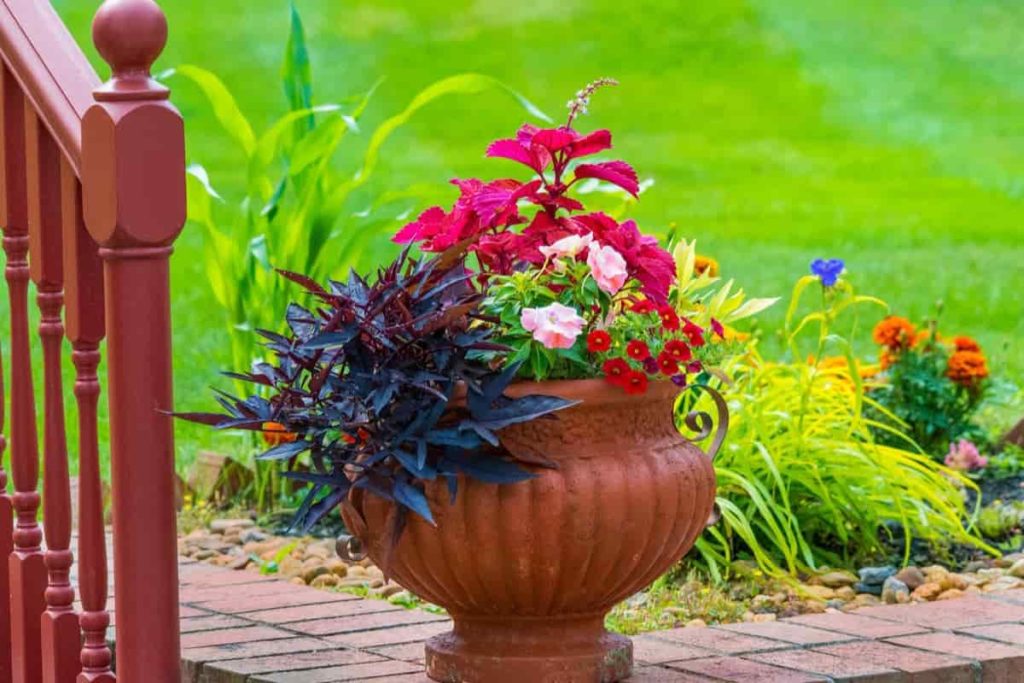
The watering frequency for container plants should be higher than that of the garden. Especially in hot, dry climes, this needs regular watering. With each successive watering, water should flow out of the drainage holes. It’s preferable to call it a day before the ground gets mushy or the water goes motionless, but doing so will result in a high fluid intake. Plants need self-watering containers if you can’t promise to remember to water them every day. These containers include a built-in reservoir that can keep water from evaporating for many days.
Fertilize your container garden
When you water a plant contained inside a container, the soil will lose part of its nutritional content. Because of this, it needs fertilizing consistently. Most plants can safely use slow-release, all-purpose fertilizer beads, but it’s still a good idea to read the labels just in case. There are no hard-and-fast rules to follow regarding fertilizing the plants inside containers. The fertilizer, watering method, and growth stage of the plants all have a role in determining how frequently and how much fertilizer should be applied.
What winter vegetables can I grow in pots?
Containers are ideal for growing winter vegetables, including cabbage, Brussels sprouts, beetroot, broccoli, kale, lettuce, radishes, scallions, onions, shallots, carrots, and spring onions, as well as garlic and broad beans. Pick hardy and early-fruiting kinds; most may be planted or sown straight into your outdoor container per the package’s or label’s planting and sowing instructions.
Spring onions are exceptionally fast-growing and will provide a harvest in the early spring if planted in the fall. There are dependable hardy cultivars like ‘White Lisbon,’ and they only require 3cm (114in) of space between each plant. If you want to attempt something simple, wait until next summer to plant garlic. The best results come from planting ‘Wight Cristo,’ a fine all-purpose cooking cultivar, 2 centimeters (1 inch) below the soil’s surface and 10 centimeters (4 inches) apart.
Like garlic, onions are a simple crop to grow, but unlike garlic, they won’t be harvestable until the following summer. Pick an early type, such as ‘First Early,’ and space bulbs out so that they protrude just above the soil by approximately 10 centimeters (4 inches). The two most significant benefits of planting broad beans in the fall are an early harvest and protection against blackfly infestations.
The fast-growing ‘Aquadulce Claudia’ cultivar is an excellent choice for fall planting. Plant at a depth of 5 cm (2 inches), space out your rows to around 23 cm (9 inches), and use a wigwam of canes to provide your seedlings some support as they grow. Some vegetables, like kale and brussels sprouts, are tough enough to harvest even in the dead of winter. To aid drainage, a layer of broken crocks should be placed at the bottom of the pot before a high-quality potting compost is added. Putting your planters on your feet can also aid drainage.
Put in your selected plants and give them plenty of water. To prevent the contents from freezing, place the containers warm but out of the sun. Using fleece to protect your pots from frost is recommended, and bubble wrap can be essential in prolonged cold snaps. Inspect your container garden daily to keep the soil equally wet; pot plants require more water than groundwater. Apply water-soluble fertilizer every two weeks.
What crops can be grown indoors in Idaho?
It is possible to cultivate vegetables indoors, such as lettuces, arugula, radishes, beet greens, spinach, kale, carrots, tomatoes, and more. All this is possible with regular shop lights.
How do I start an indoor garden for beginners?
You will likely get a fully established plant from a shop or a friend. We’ll talk about tending to mature plants later; for now, however, let’s focus on what matters: planting the seeds themselves. Nurturing a seedling to maturity is rewarding, and with a few basic skills in indoor gardening, it’s also relatively simple. As you grow inside, you need to consider the parameters of your planting area.
Consider the room’s temperature, the amount of light the plants will get, how large your plants will develop, and how long it will take them to mature. Here are some suggestions for what to grow in your first indoor garden, based on their suitability to a colder environment, ease of harvest, and the availability of other growing conditions. It’s hard to fathom the sheer magnitude of plant species globally.
Consider the wide variety of plants you are already acquainted with, from the flowers that thrive in mild winters and summers to the luxuriant trees and vines of the tropics and the cactus of the desert. Plants generally have adapted to various environmental factors, including temperature, light, moisture, and nutrient availability (to name just a few). Each plant has its unique requirements for light, water, and nutrients.
Learn the needs of the plant(s) you currently have. The sticker attached to your plant should be read carefully for care instructions. Searching independently for advice on how to nurture your plant is also recommended. Watering indoor plants should be done at different intervals for each plant kind. Most gardening authorities advise watering houseplants weekly. Cacti and other desert plants still need water once a week, although they can go longer without it than their broadleaf counterparts.
Some plants prefer “watered from the bottom to avoid damaging their roots.” This allows you to fill a dish with water and then set the pot (which has holes on the bottom) inside the dish so that water may be absorbed through the holes and into the plant. Most houseplants like temperatures between 65 and 75 degrees Fahrenheit, although they will survive and even flourish in a wider range.
There may be a more critical requirement to water them in hot weather and less in colder weather—Master the art of monitoring soil moisture levels and making appropriate watering adjustments. Aside from the obvious watering and sunlight, some plants have more specific needs. Orchids, for instance, like high humidity, but you shouldn’t drench them. The standard recommendation is three ice cubes weekly in the orchid’s container. Daily misting with water to maintain humidity can also be necessary, depending on your location.
In case you missed it: How to Start Home Garden in Colorado (CO) from Scratch: For Indoors, Outdoors, Backyards, and Containers
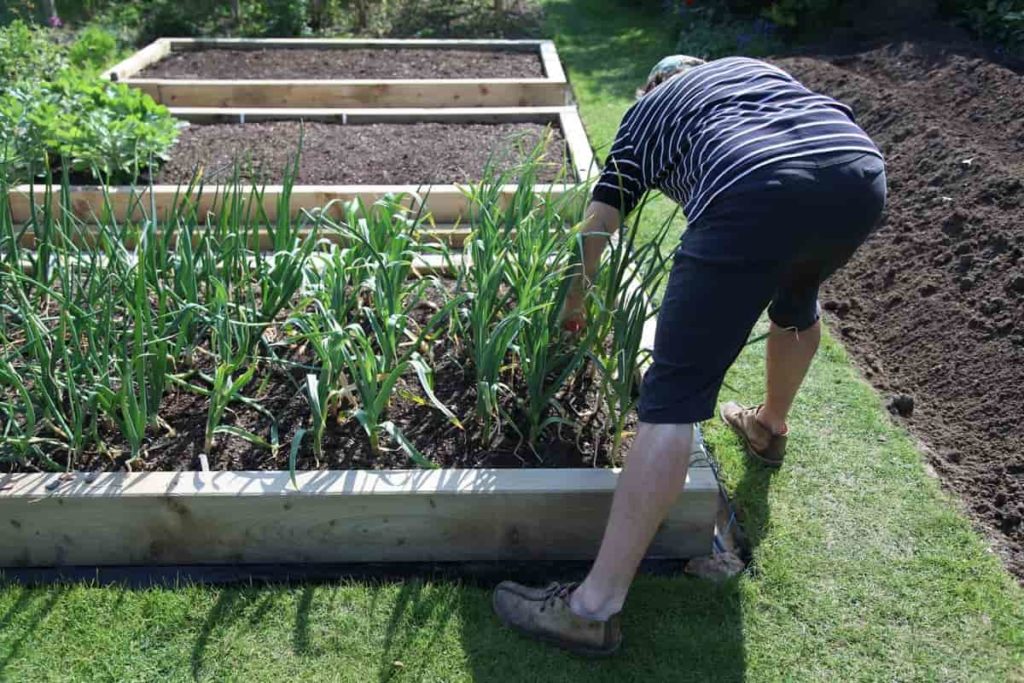
Plants can synthesize food from the atmosphere’s carbon dioxide (CO2) and water through photosynthesis. But a variety of additional nutrients are essential to their development and health. Most plants’ roots penetrate the soil and draw crucial nutrients such as nitrogen, phosphorus, and potassium. The orchid is an example of an epiphyte, a plant that grows atop another plant. Typically, they eat the dead leaves and twigs that are close by. On the other hand, indoor plant life might suffer from a gradual depletion of available nutrients.
For this reason, fertilizing plants consistently is recommended. I’ve heard recommendations ranging from once a week to once a month to once every two or three months for fertilizer of your plants. In most cases, less frequent fertilization is preferable to more frequent fertilization; therefore, be careful not to over-fertilize your plants. Nowadays, you can get fertilizers in various forms, including liquid, pellet, and slow-release. Do some homework to find out what fits your needs and those of your plants.
Due to their varied origins, indoor plants have varying needs for the amount of light they get. When it comes to sunshine, certain plants need more than others. Direct sunlight for plants means placing them near a window where they will get at least six hours of sun daily. If it requires moderate sunlight, it needs four hours of direct sunlight daily. The plant must be placed a few feet away from a window to receive indirect sunlight. The placement of your indoor plants in your house or business should be determined by how much sunshine they need.
Practicing transferring plants from their current containers to new ones is common, and re-pot them. A bigger container is usually used to accommodate the plant’s inevitable expansion. The nutrients in the new soil will be higher than in the old. You should repot your plants every year or two at the most, although there are many situations where this isn’t necessary. Make sure your houseplant is growing in an appropriate container. Make sure the container you choose for your plants has enough drainage before buying it.
What kind of wood should I use for raised beds?
Cedar is usually your bet if you’re looking for rot-resistant wood for your garden beds. Despite its popularity, Western red cedar isn’t the only option for outdoor building projects; white cedar, yellow cedar, and juniper are all sturdy and beautiful.
How long will untreated wood last in raised beds?
Untreated wood might last 2-5 or 10-15 years in the environment. Decomposition of wood can be hastened by contact with water or moisture and the sun’s ultraviolet radiation.
Can you use fence posts for raised beds?
Using cedar fence posts to construct a raised vegetable bed in your backyard is a certain way to ensure the bed’s longevity and strength. You can rest easy knowing that the garden bed’s posts won’t rust away any time in the next 15 years. We typically use six or 8-foot long and 3 to 4-inch broad cedar fence posts. The bed needs two levels of support to achieve the desired 4–6 inches of completed, above-ground height.
Using spray paint, Mark the planter’s dimensions (6 or 8 feet wide by 4 feet deep). Put the raised garden where it will receive plenty of sunlight. Remove a depth of 4 inches of dirt inside the outlined area and an additional 6 inches beyond the line. With a saw, lop off four 4-foot cedar fence posts for the planter’s shorter ends. Build a rectangular planter with two 6- or 8-foot-long poles and two 4-foot-long posts. Nail two 6-inch spikes through the post’s sides and into each corner to keep it all together.
The first row of cedar fence posts should be set in place, and another row should be set up on top of that. Nail two 6-inch staples through the posts’ sides and into each corner to hold the upper level together. Nail the two pieces together using six 6-inch nails along the tops of the side walls and three nails along the top of the short sides to ensure they stay put.
To aid drainage and keep weeds at bay, fill the planter with pea gravel to a depth of two to three inches. The remaining space in the planter should be filled with a combination of three-quarters organic compost and one-quarter topsoil. After you’ve smoothed out the pot’s soil, let it settle for two weeks.
Should you paint a raised garden bed?
To put it simply, the answer is not yes. You can test to see whether the old paint includes lead or other poisons, but chances are high that it does and will harm your organic crops. Also, untreated, older treated wood may still have arsenic compounds. Taking drastic precautions like coating the wood with plastic is possible, but plastic isn’t healthy for plants either. This gets a big fat NO from us.
It’s possible that you didn’t intend to use weathered, painted wood. In response to whether or not one may apply paint to a raised garden bed constructed lately out of fresh, bare wood, the answer is an unqualified yes, provided that the wood has not been chemically treated. If you don’t treat your wood, it will decay in the damp ground. On the other hand, using nontoxic exterior paint to decorate a raised garden bed is possible if you choose your paint properly.
Find garden-friendly paint at your local hardware shop. It gives the wood some personality and protects it from the elements. Options for Raised Beds that can be painted There are various options if the thought of painting raised garden beds deters you. It is possible to construct raised beds out of wood that does not need to be treated since it is inherently rot-resistant, such as cedar or redwood.
You might also think about building your raised beds out of non-hazardous materials. Stone flower beds and red brick walls will give your garden the classic appearance you’re after. Use logs, weaved branches, or bamboo to provide a natural feel to your garden.
In case you missed it: Homemade Fertilizers for Root Vegetables: Potatoes, Carrots, Beetroot, Onions, Radishes, Turnip, Ginger, and Garlic
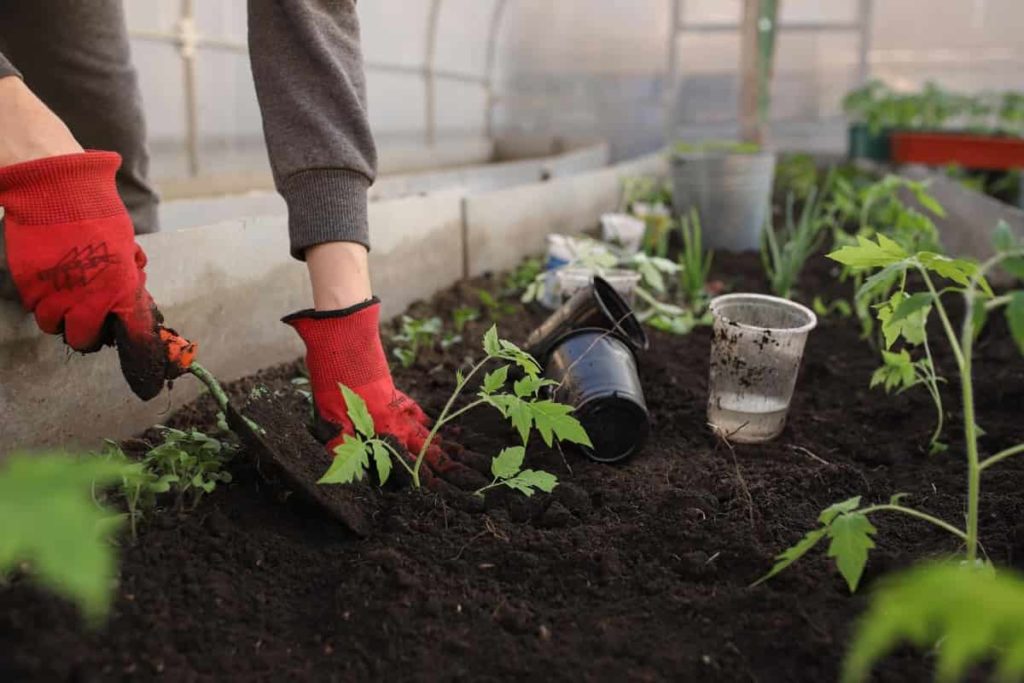
Conclusion
Gardening isn’t rocket science. It takes experimentation, but the experience counts. Every year will provide you with new experiences and knowledge. It will become easier, and you will figure out your most successful approaches. If you live in the following cities/towns/counties of Idaho (ID) in the United States of America, this article might be helpful with the basics of setting up a home garden indoors, outdoors in backyards, and in containers.
| Boise | Coeur d’Alene | Idaho Falls |
| Twin Falls | Pocatello | Nampa |
| Meridian | Lewiston | Moscow |
| Sandpoint | Caldwell | McCall |
| Post Falls | Rexburg | Eagle |
| Burley | Blackfoot | Mountain Home |
| Ketchum | Jerome | Emmett |
| Hailey | Kuna | Driggs |
| Bonners Ferry | Middleton | Weiser |
| Grangeville | Rathdrum | Buhl |
| Saint Maries | Soda Springs | American Falls |
| Saint Anthony | Chubbuck | Malad City |
- The Role of Watering in Preventing Drying Moringa Pods
- Best Liquid Fertilizer for Flowering Plants
- How to Set Up an Efficient Watering System for Home Garden
- How to Mulch Tulip Bulbs: Expert Tips Best Tulip Blooms
- Common Problems with Potted Figs and How to Solve Them
- How to Prevent Flower Drops in Pomegranate Trees: Effective Tips
- How to Boost Ridge Gourd Flowering and Yield: A Beginner’s Guide
- Effective Pollination Techniques for Maximizing Gourds Yield
- Composting Techniques for Manure in Home Gardens
- A Step-by-Step Guide on Propagation Techniques for Jasmine Plants
- How Do I Make My Garden Less Cluttered: A Beginners Guide
- Growing Red Currants at Home for Beginners
- Gardening Techniques in Planting Vegetables
- Where to Place Indoor Plants in Your Home
- How to Grow Tomatoes Organically at Home: A Comprehensive Guide
- Organic Gardening on a Budget: Low-Cost Methods and Materials
- Gongura Seed Germination and Planting Methods
- Cabbage Seed Germination and Selection
- Broccoli Seed Germination and Selection
- Asparagus Seed Germination and Variety Selection
- Seasonal Flower Gardening: Best Practices for Spring, Summer, Fall, and Winter
- How to Grow Hibiscus from Flower
- Plantation Ideas for Home Decoration: A Beginners Guide
- Flower Garden Designs and Layouts for Beginners
- Planting and Spacing Techniques in Papaya: A Beginner’s Guide
- Growing Gold: Essential Techniques for Planting Pineapples
- How to Make Kalanchoe Plant Bushy: Home Remedies and Solutions
- 11 Reasons Why Your Gardenia is Not Blooming: Home Remedies and Solutions
- Eco Elegance: The Guide to Designing a Drought-Tolerant Landscape
- Gardening on a Slope: Strategies for Hillside Landscaping
- Nourish and Flourish: Top Organic Mulches for Thriving House Plants
- Everything You Want to Know about Indian Mogra Flower: Discover Uses and Growing
- Green Thumb Success: Expert Tips for Cultivating Greenhouse Pumpkins All Year Round
- Maximize Growth & Flavor: The Ultimate Guide to Companion Planting in Herb Gardens
- How to Control Rhododendron Problems Naturally: Home Remedies and Organic Ways to Fix Them
- Natural Magic: The Remarkable Benefits of Cinnamon for Plants